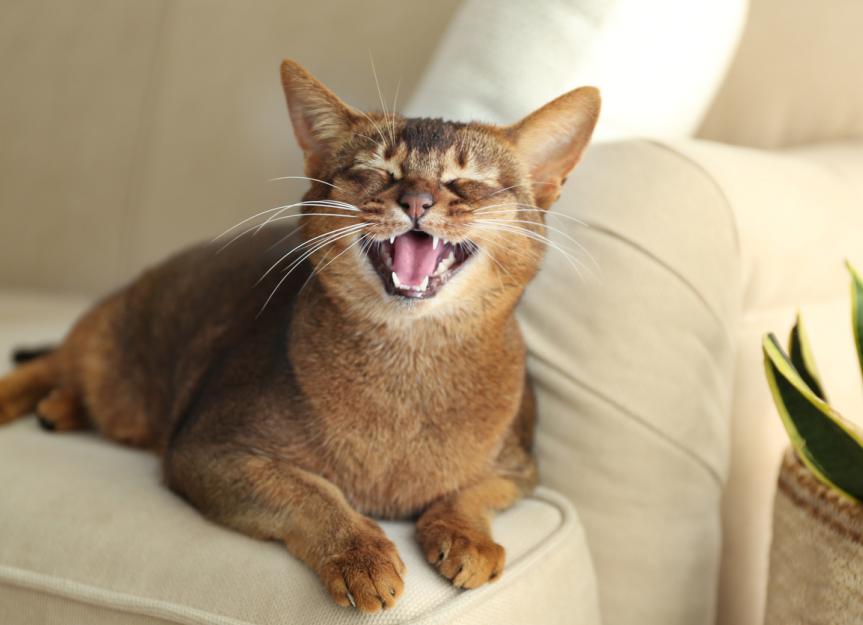Cat Tooth Extraction Recovery Guide
Dental disease in cats is a condition that shows up often in middle-aged cats. Since only 20% of a cat’s teeth can be seen during a normal physical examination, your cat should have complete oral health evaluations that are performed under general anesthesia.
Cat tooth removal may occur during a comprehensive dental exam, which consists of:
Probing the teeth and gumline to measure the depth of the pockets
Taking x-rays of the teeth, soft tissue, and bone to help visualize tooth roots and dental ligaments
Extracting (removing) any diseased teeth
Scaling and polishing (cleaning) the teeth
Assessing oral tumors and abnormalities
Here’s what you need to know about helping your cat recover from tooth extraction surgery.
What to Watch for After Your Cat’s Dental Surgery
Sutures may be used to close gum tissue where teeth have been removed during your cat’s surgery. These sutures often dissolve on their own to avoid having another round of anesthesia for suture removal. In some cases, gum tissue is left open to drain and heal on its own.
If your cat’s mouth tissue is infected, you may notice the following:
A foul odor coming from your cat’s mouth
A slight swelling on the lower or upper jawline, or under the eye area; the eye may also seem to bulge or protrude from your cat’s head
Refusal of food
Drainage from the nose or mouth
General sluggishness
Drooling
Pawing at the mouth or rubbing their face on the ground
Dropping food while eating
Antibiotics may have already been sent home with you to prevent infection, but call your veterinarian if you notice any of these signs.
怎样喂养你的猫牙齿后提取飙升ry
Offer soft foods for several days after your cat’s tooth extraction surgery. These include moist food, semi-moist food, and even kibble that is soaked in water.
Speak with your veterinarian about any special feeding instructions after surgery to help decrease your cat’s discomfort and pain and encourage healing.
Your veterinarian may also recommend changing your cat’s current diet to a therapeutic dental or oral care diet. These diets have been formulated and balanced to help control and decrease the incidence of dental disease.
Dental diets are not a replacement for dental examinations, but they can help decrease the risks associated with dental disease.
Managing Your Cat’s Pain After Tooth Extraction
Locally injected numbing agents may have been used in your cat’s mouth to control pain during the tooth extraction surgery. Those local blocks can last anywhere from 6-24 hours, depending on the type of medication that was given.
After these blocks wear off, you will likely be instructed to give your catoral medication to control the painat home.
Closely monitor your cat’s recovery and watch for signs that they are still in pain:
Vocalizing (meowing and howling)
Pawing at their mouth
Hiding from people and other pets
Lethargy (sluggishness)
Some of these signs can also be side effects from anesthesia or pain medication. If you notice any of these signs and are giving your cat the medication as directed, call your vet to ask for next steps.
Do not stop giving medications unless instructed to do so by your veterinarian.
How Long Does It Take for Cats To Recover From Tooth Extraction?
Most veterinarians will schedule a recheck 7-14 days after cat dental extractions to look in their mouth and assess healing. Sometimes sedation is necessary, but the examination is usually quick and simple.
How To Prevent Future Cat Tooth Extractions
To prevent future cat tooth extractions, your veterinarian may suggest certain products and activities to reduce plaque accumulation. These may include:
Dental treats
Therapeutic dental diets
Water additives
Toothbrushing
Mouth rinsing
Consider looking over theVeterinary Oral Health Council’s (VOHC) websitefor approved products that help with dental disease and plaque accumulation.
Always speak with your veterinarian about dental products and when they should be started after a dental procedure

